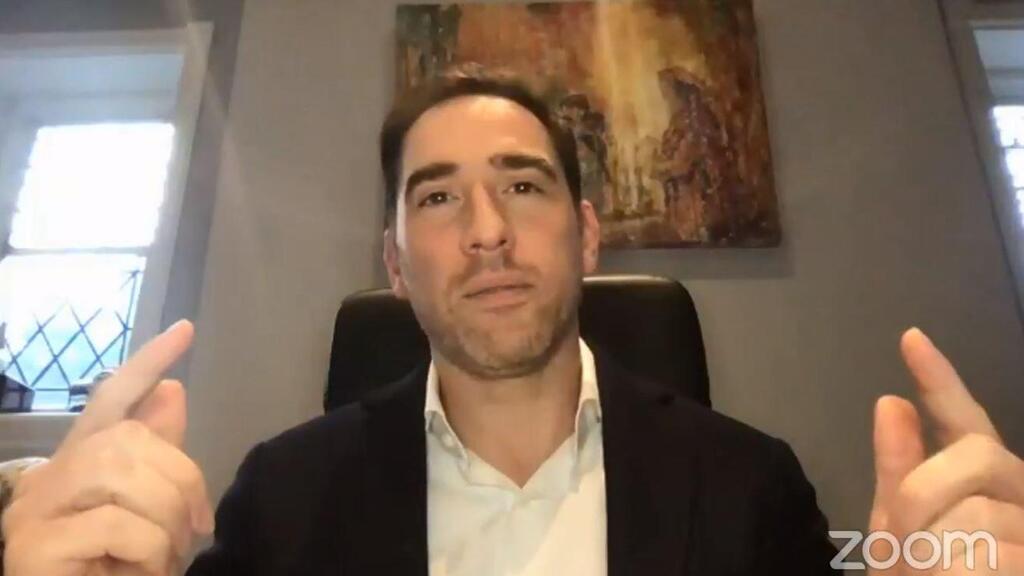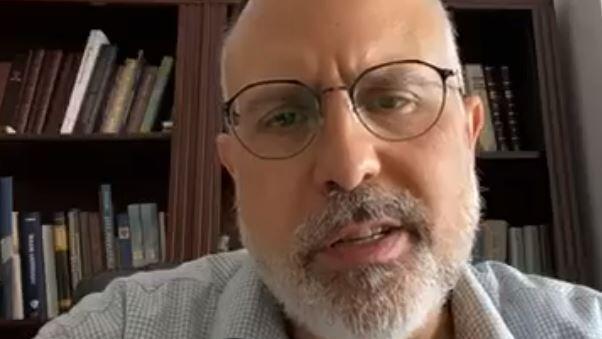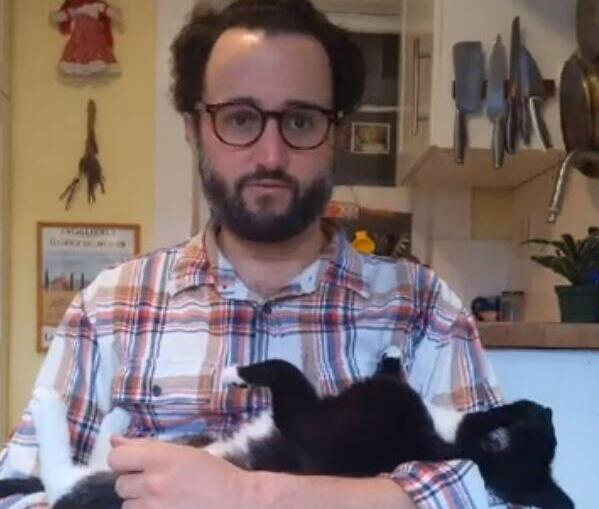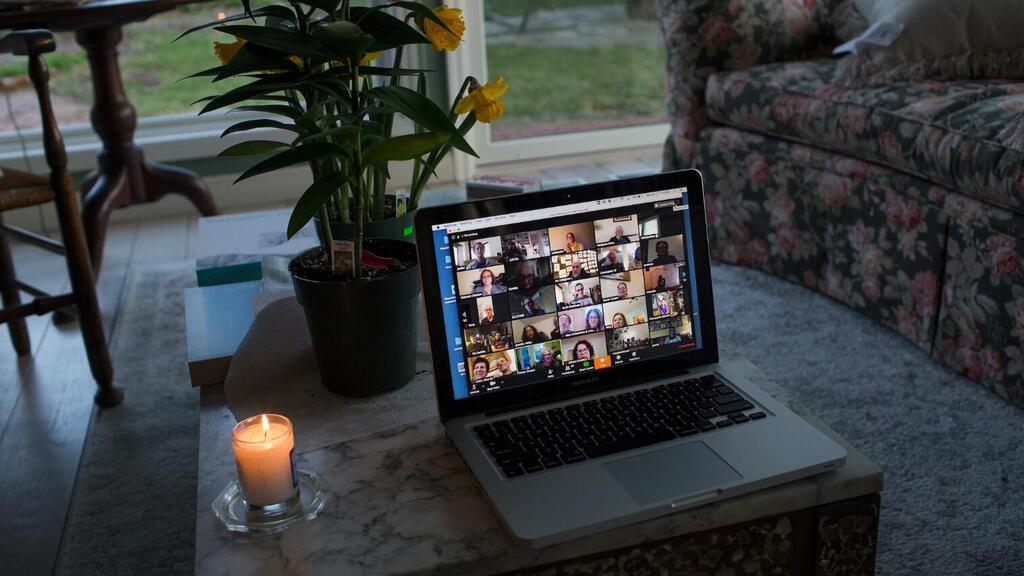Getting your Trinity Audio player ready...
The COVID pandemic is over, at least according to U.S. President Joe Biden in his recent declaration. But the past two and a half years have been a time of personal and professional struggle for many, including synagogues where those two worlds more often than not collide.
Synagogues, like other centers for communal gathering, found themselves closed and later severely restricted by measures taken to counter the spread of COVID-19 after the outbreak began in early 2020. Working to ensure their communities were safe and supported has proven a challenge for religious leaders all over the world.
So how did these houses of worship – for many the center of rites of passage, communal life and comfort in dark days – fare when forced to consider huge compromises to keep serving their community or even shutting their doors altogether? How do they feel now, when life is finally returning to a form of normal, even if it is a new normal, on the eve of a New Year in the Jewish calendar?
“It’s been an enormous challenge holding the community together during the pandemic when everything is about isolation and separation. The whole role of synagogues is to hold community together,” says Rabbi Michael Cahana of Congregation Beth Israel in Portland, Oregon.
And it was a problem that was not unique to American congregations. Faced with the prospect of closed synagogues, fragmented congregations, and lonely congregants, rabbis, and other clergy swung into action to keep their communities together on holy days and regular ones.
“The first word that comes to mind is challenging,” claimed Rabbi Joseph Dweck of the Bevis Marks Orthodox Sephardi synagogue in London. “It’s been very difficult because we went through a period of two years in which the community and congregation simply could not come together physically.”
4 View gallery


Rabbi Joseph Dweck of Bevis Marks synagogue in London delivering a lesson via Zoom, June 9, 2020
(Photo: Screenshot, The Media Line)
Creativity immediately came into play, with rabbis adapting traditional prayers and services for members who were no longer able to share the same space. In a nutshell, thank God for Zoom.
“We had to adjust tremendously, and we reached out and maintained connections and cohesion with the community and that entailed everything from doing shopping, making phone calls to members, making sure that they were okay,” Rabbi Dweck recalls. “We did programming for our members so that there was a whole bunch of things that we do on Zoom.
“We really had to be able to innovate and to anticipate how we hold the community and support the community in this very difficult time,” he says.
Keeping a sense of community was also vital to Rabbanit Bracha Jaffe of the Orthodox Hebrew Institute of Riverdale in New York City.
“We in our shul [synagogue] really shifted fast,” she said. “We had many Zoom things … [and] we offered meals and we ordered and delivered communally hundreds and hundreds of Pesach [Passover] meals.”
Unlike their Orthodox counterparts who cannot use technology on the sabbath and holy days, Zoom was a useful tool for Reform and Conservative synagogues.
“We closed the doors but we didn’t miss any services,” Rabbi Jason Rosner of Reform synagogue Temple Beth Israel of Highland Park and Eagle Rock in Los Angeles recalls of the first year of the pandemic.
“When we closed, that weekend we were on Zoom. I edited together a customized siddur [prayer book] just for our community that was usable for Zoom. We changed the service to reflect a service that you would do on your own,” he says.
For Rabbi Cahana, it meant adapting technology that was already in use on a regular basis.
“We created lots of new programming that was really responsive to the needs of that time and how to directly communicate and have the kind of more intimate experience,” he says.
“One of the things that we found was that although we’ve been streaming for a long time, Zoom really allowed us to be much more intimate than we normally are; we moved our streaming into our homes so we were streaming from our living room into your living room and it created a very intimate feeling that we got a very, very positive response from.”
With no Zoom option, Orthodox synagogues found other ways to balance COVID regulations and worship.
“The nature of Orthodox shuls is that we’re not doing Zoom, so there’s an upside and downside to that,” says Rabbi Hyim Shafner of Kesher Israel synagogue in Georgetown, Washington.
“The upside is you don’t get wedded to Zoom and coming back in person is easier; the downside is that we couldn’t use Zoom during COVID and so it was a little bit harder to really retain cohesion,” he says.
“With the Yamim Noraim [High Holy Days], we did things that we have genuinely never done before, because we had to keep a great deal of social distancing, and even with the social distancing we could not spend a good amount of time in the same space,” says Rabbi Dweck.
“I had to edit the prayer services, so I had to decide what was essential prayer and what was added prayer and to remove aspects of the service that would make the service longer and we had to innovate in terms of what we did,” he shared.
“We did a service of family bubbles; families could come with their children and sit all together but distanced from another family,” he says. “We did that for two years in various ways.”
“We had to be creative,” Rabbi Shafner also says of keeping the sense of a communal celebration during restrictions.
“We had shofar blowing in the national park that’s about one block from the shul. That first year we had 100 people that came to the park for the shofar blowing” for Rosh Hashanah.
“At Shavuot instead of indoor learning at night, we used three people’s backyards,” he says. “We moved classes from one place to another, so people were learning all night but it was in the backyards outside.”
Rabbanit Bracha says some of the changes they made for the first Rosh Hashanah lasted as time went on, and extended to every event in the Jewish calendar.
“When people were alone for Pesach we buddied people up, we had teshuvot [rabbinical decisions] about being able to turn on your Zoom before chag [the holiday] so that you could Zoom in with your family if you didn’t actually touch the computer if you had to,” she says.
“We had all sorts of things to do to make your Shabbat meaningful, spiritual, and feel less lonely,” she says. “So we actually offered a lot of ways for people to feel connected [despite] not coming to shul.”
In that first Rosh Hashanah of uncertainty and isolation, Rabbi Cahana truly endeavored to make his Portland congregants still feel part of their community as they were forced to mark the festival at home.
“We actually filmed the entire [Rosh Hashanah] service separately,” he explained. “It was a very complicated and strange experience because we were filming in the middle of the summer. We had a professional crew come in and do it, but we filmed everything out of order because we wanted to minimize the amount of time that people were together.
“We spread the choir out throughout our sanctuary seating area so that they were far apart and then filmed all of the things that they were doing and filmed all of the things with our volunteer choir separately and then the clergy leading different parts of the services.
“It was filmed like a movie and it was all edited together and the whole thing was filmed so that the experience of the people when we sent it out live for the people who were experiencing it, it was seamless.”
To Rabbi Rosner, the key was making people feel that although some things had changed, it was still the same faith and same customs.
“I think what we did to make people embrace [the COVID-induced changes] was that we really pivoted hard into different kinds of Jewish rituals that could be done without necessarily gathering in person,” he says.
“We attempted to do things that were similar, like a shofar wave where people blew the shofar across the city at the same time,” he says. “For Passover, we had a Seder on Zoom. It was crazy because it didn’t sync up perfectly, but people really appreciated having that. We did High Holidays on Zoom as well and I read Torah on my inherited grandparents’ dining room table, which was quite touching.”
The rabbi also leaned into the energy and youth of his congregation.
“We really moved quickly to restructure our programming, rather than trying to force a square peg into a round hole,” he says.
“There was the sense that the people re-appropriated a lot of the home-based Judaism, the personal kind of hands-on stuff that had fallen by the wayside,” the rabbi recalls.
“A lot more people built a sukkah in their yard during the pandemic that had not done so before. We want to do hands-on stuff, so the idea of building a little backyard booth was very appealing. People used tools and they could collect their own schach [material for the roof of a sukkah] and so that was very fun for people.”
Adapting familiar events to an unfamiliar situation was something that Rabbi Cahana also encountered.
“Bnei mitzvah [bar and bat mitzvah service] was an interesting experience at the beginning of the pandemic,” he says. “We wound up bringing a Torah scroll to people’s homes and they would have the service in their home with the technology, and we would be in our home leading services and someone else would have an aliyah [call to read from the Torah] from their home so it was a kind of wild experience. But actually, kind of wonderful, people really enjoyed having that experience. Very different simchas [celebrations] but still it was something that was very unique and special.”
Rabbanit Bracha recalls that at times her own home life took second place to the needs of her community, but, she says, that was her role.
“I don’t want to make it about me, it’s not about me but it’s about us as clergy who were there for other people,” she says.
After more than two years of improvisation and adjustment, many now have what Rabbanit Bracha calls “COVID keepers” – a phrase she adopted from a member of her congregation to refer to habits that were acquired during the pandemic that were worth maintaining.
“I think it’s a beautiful term because it’s things that happened to us during COVID that we actually do want to keep, like having a Zoom for a funeral or for shiva or for smachot [festive occasions],” she says.
For Rabbi Dweck of London, that means expanding his educational efforts well past the borders of his community, city, and even country.
“Before COVID I wanted to do my classes on Zoom and it really didn’t fly very well because people didn’t know how to do it!” he says.
“And now because it’s the same thing as just getting on a phone call for most people, I started an entire learning platform called the chavurah [a small group gathering for Jewish learning or prayer] that basically has teachers from around the world and students from around the world studying the classical Sephardi approach to Judaism and Torah.
“We have at this point almost 400 paid members in 20 countries around the world and the average subscriber is 25 years old. That would not have happened if it were not for COVID,” he says.
Rabbi Cahana also sees the value in his synagogue continuing its emphasis on technology as an outreach tool.
“We’ve been streaming for years but it was in many ways an afterthought,” he says. “We’ve now invested a lot in upping the technology and making it a more engaging experience. Because there are going to be people for whom it’s going to be a long time before they are comfortable being in large crowds and there are people for whom the accessibility issues are going to remain.“
Rabbi Shafner says that his synagogue has adapted a Tisha b’Av tradition to allow members of the congregation to take a more active role.
4 View gallery


Rabbi Hyim Shafner of Kesher Israel Congregation in Washington, DC, delivering a weekly sermon via video, July 17, 2020
(Photo: Screenshot, The Media Line)
“The first Tisha b’Av we did on Zoom because Tisha b’Av was one of the few days we could do on Zoom,” he says.
“I had different people in the congregation take one kina [elegy] and read it through and do a two-to-five-minute reflection, explaining this kina, this set prayer that we say on Tisha b’Av or reflecting on a personal aim,” he says.
“It was the longest kinot we ever did, it was the best kinot we ever did because it wasn’t just me saying a few words about a kina and then everybody saying it; it was people from the congregation sharing their thoughts and reflections.
“This year, kinot were once again read inside the Georgetown synagogue, but “we had members of the congregation, both men and women come up to the bimah before each kina and give their own personal reflection about it. And it was just wonderful.”
Rabbanit Bracha also found her congregation stepping up to take a bigger role in services.
“We tapped into people who never had led services before or blown the shofar before in shul,” she said. “And we just said whoever is willing to step up, we will be happy to have you because we have so many minyanim [public prayer services, to accommodate social distancing]. It was in many ways very beautiful because so many people wanted to have some sort of davening experience.”
Lockdowns and limited gatherings have also taken their toll on most synagogues, with clergy facing the prospect of diminished attendance as life returns to a routine of unrestricted movement.
“I’ve spoken with many Jewish leaders and Jewish communities – we still for the most part are struggling to meet the numbers we had before COVID,” admits Rabbi Dweck. “It’s getting better, but it’s not where it was. So that is concerning.”
Even so, he asserts, for many, the synagogue was a comfort throughout the pandemic.
“One person said outright to me that in all the craziness and change that’s going on, the synagogue is the one place that’s stayed the same,” he says.
And now that the High Holidays are upon them again, few are looking backward to the frustrations and fears of the recent past and are eager to welcome their congregations back with open arms and packed pews.
“I firmly believe that people need connections, and human beings need to see other human beings in person,” says Rabbi Dweck.
4 View gallery


Rabbi Jason Rosner of Temple Beth Israel of Highland Park and Eagle Rock in Los Angeles giving a teaching about Passover from his kitchen, April 6, 2020
(Photo: Screenshot, The Media Line)
Rabbi Rosner agrees with the belief that humans need social interaction with other humans.
“We try to encourage people to come back in person as much as possible,” he says. “We will be doing a livestream for the High Holidays this year but it’s really anathema to me personally. I really hate the idea that we would lose the in-person part, which is the preserver of our communities for as long as we’ve had them.”
This year, Rabbi Shafner’s Georgetown congregation has a choice of Rosh Hashanah services with COVID health measures in place, but few people are taking advantage.
The shul is holding a “mask optional” service, but “in another room in the synagogue we are going to do a mask-only service for the 20 or 30 people who really want that,” he says.
Even without all the established history and long-standing congregation of other many synagogues, Rabbi Elie Abadi of Dubai is looking forward to the coming year, as his community also celebrates two years since the signing of the Abraham Accords between Israel and the UAE and Bahrain.
“It’s really very heartening to see that the community has grown, has matured, has diversified, and has given service not just to the Jews who live here but to Jewish tourists who are coming from all over the world to be part of it,” he said.
“We are looking forward to more growth in the future years to provide more services to the Jewish community,” he says. “May this year indeed bring peace, tranquility, an embrace between peoples and between nations, and may we not see any more war.”
For Rabbi Cahana, the move out of the pandemic means a time to look back and take stock of the experience that the entire world has been through.
“What I’m looking forward to is understanding how we’re different,” he says. He relates that both he and a cleric from the local Episcopal church discovered that their respective records from 1918 barely mentioned the Spanish flu outbreak.
“The overall effect was that they didn’t want to remember, they wanted to move past it and I don’t want that to be the case. I don’t want it to be that we try to pretend that the pandemic didn’t happen,” he says.
“I think we’ve learned a lot about how important community really is and it’s easy to take it for granted. I think there are lessons like that that we really have to pay more attention to and it’s going to take us a while to figure out. I want to keep that present and not just say ‘Oh now everything is back to the way it was.’ Because it’s not. We’re changed and I want to learn how.”


